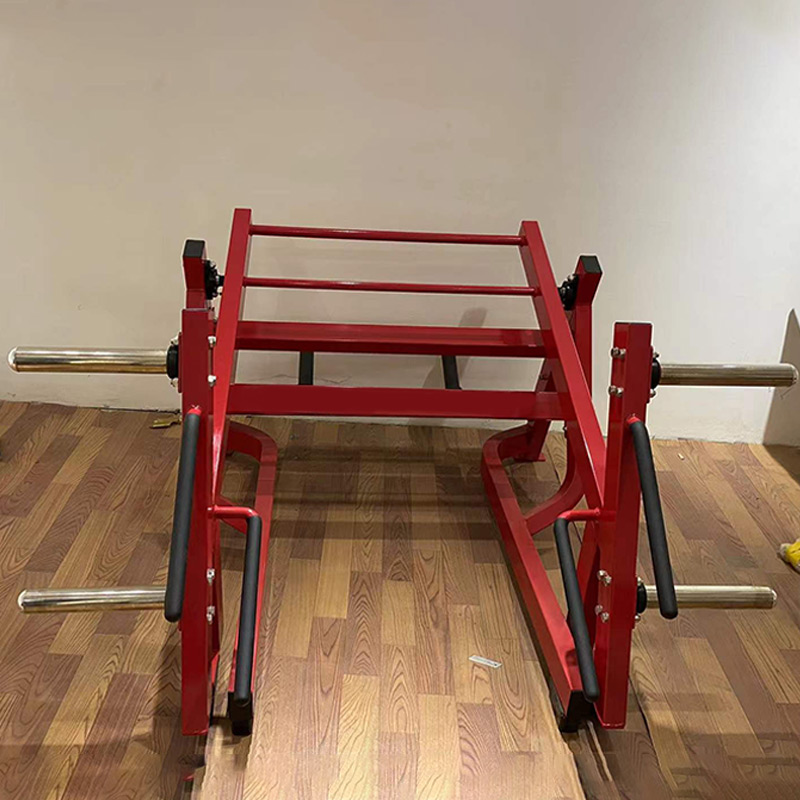A squat lunge, also known simply as a lunge, is a fundamental lower-body exercise that targets several muscles, primarily the quadriceps, hamstrings, glutes, and calves. Here’s a detailed description of the squat lunge:
- Starting Position:
- Stand with your feet hip-width apart, maintaining a straight posture with your shoulders back and core engaged.
- Keep your hands on your hips or hold weights for added resistance if desired.
- Execution:
- Take a step forward with one foot (usually about 2-3 feet depending on your stride and comfort).
- Lower your body straight down by bending both knees until they form a 90-degree angle. The back knee should come close to or lightly touch the ground, depending on your flexibility and comfort level.
- Ensure your front knee is directly above your ankle, and your back knee is pointing down toward the floor.
- Alignment:
- Keep your torso upright throughout the movement, avoiding leaning forward excessively.
- Maintain a straight back with your chest lifted to prevent strain on the lower back.
- Your front thigh should be parallel to the floor or slightly angled down, ensuring the knee is aligned with the ankle.
- Pushing Back:
- Push through the heel of your front foot to return to the starting position.
- Bring your back foot forward to meet your front foot.
- Complete the set number of repetitions on one side before switching to the other leg.
- Breathing and Rhythm:
- Inhale as you lower yourself into the lunge position.
- Exhale as you push through your front heel to return to the starting position.
- Variations:
- Reverse Lunge: Instead of stepping forward, step backward into the lunge position.
- Walking Lunge: Perform lunges while walking forward, alternating legs with each step.
- Weighted Lunge: Hold dumbbells or a barbell on your shoulders to increase resistance.
- Pulse Lunge: After lowering into the lunge position, pulse slightly up and down before returning to the starting position.
- Benefits:
- Strengthens Lower Body: Targets quadriceps, hamstrings, glutes, and calves for overall lower-body strength.
- Improves Balance and Stability: Engages core muscles and improves balance through unilateral leg movements.
- Functional Movement: Mimics everyday activities like walking and climbing stairs, making it a functional exercise.
- Versatility: Can be performed with bodyweight or with added resistance, suitable for various fitness levels.
The squat lunge is a versatile exercise that can be incorporated into leg workouts or full-body routines to improve strength, stability, and muscle endurance in the lower body. Proper form and alignment are crucial to maximize effectiveness and prevent injury.

























































Reviews
There are no reviews yet.